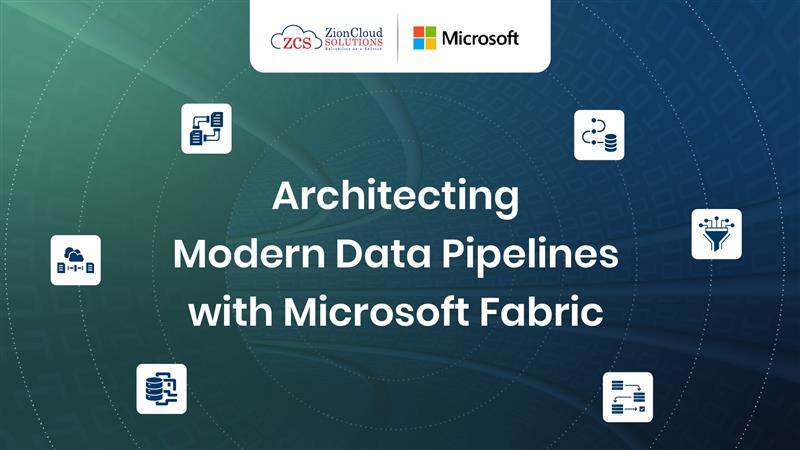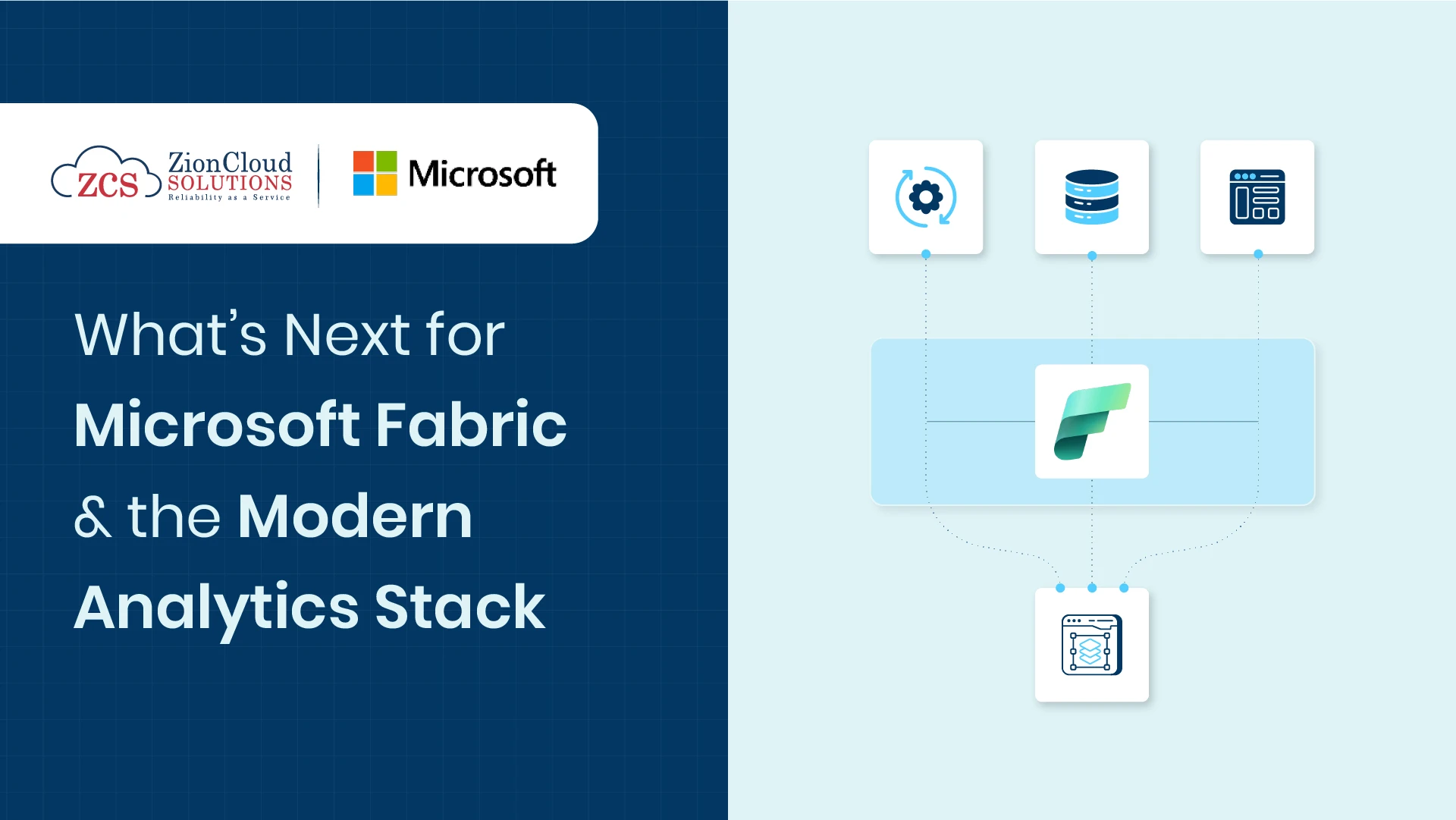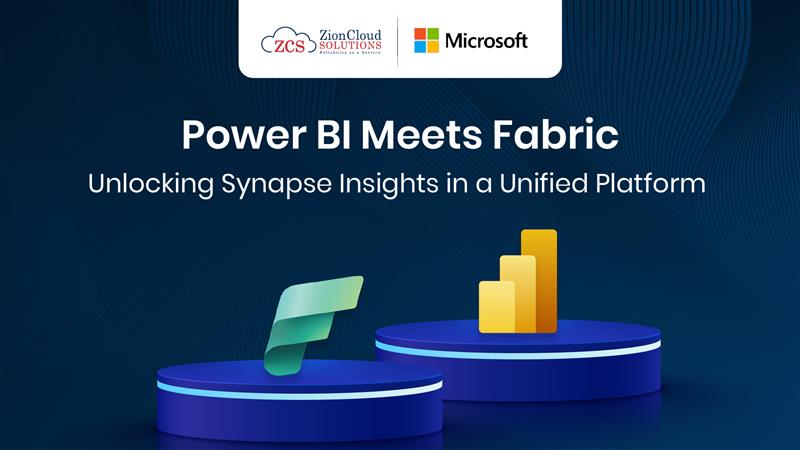Architecting Modern Data Pipelines with Microsoft Fabric
Oct 13, 2025 20:45 PM
Data is growing faster than ever, and enterprises are struggling to keep up. Microsoft Fabric offers a unified way to turn that challenge into opportunity. Besides, enterprises are moving away from fragmented systems and towards a unified data platform where ingestion, storage, governance, and analytics come together seamlessly.
A Microsoft Fabric data pipeline enables businesses to reduce complexity, accelerate insights, and embrace AI-driven innovation.
Therefore, by understanding how to architect modern data pipelines with Microsoft Fabric, enterprises can build a future-proof data strategy that not only addresses today’s challenges but also positions them for tomorrow’s opportunities.
Why Microsoft Fabric Matters for Modern Data Pipelines
Building a modern data pipeline is no longer just about moving data from point A to point B. The real challenge lies in ensuring the pipeline is scalable, secure, compliant, and analytics ready.
Many organizations still rely on disconnected tools: one platform for ingestion, another for storage, and yet another for reporting. This fragmentation creates silos, drives costs, and slows decision-making.
Moreover, Microsoft Fabric solves this problem with its Lakehouse architecture, known as One Lake. One Lake combines the flexibility of a data lake with the structure of a warehouse, giving businesses a single source of truth. This foundation allows companies to work with structured and unstructured data, all under one governance framework.
What sets Microsoft Fabric pipelines apart is the integration of compliance and governance features from day one. Security controls, RBAC, and encryption ensure that even the most regulated industries can safely rely on Fabric.
How a Fabric Data Pipeline Works
Designing a data pipeline in Microsoft Fabric typically follows a flow:
- Ingestion
- Storage
- Transformation
- Consumption
Ingestion and Integration
Using Fabric Data Factory, enterprises can connect to hundreds of data sources. Whether pulling ERP data from SAP, streaming IoT sensor feeds, or integrating APIs, Fabric reduces the engineering overhead by offering prebuilt connectors. This simplifies the first step of pipeline architecture.
Unified Storage with One Lake
All ingested data lands in One Lake, Fabric’s centralized storage system. Unlike traditional architectures that separate lakes from warehouses, One Lake enables hybrid storage that is both cost-effective and performant. This approach reduces duplication, making governance more straightforward, and strengthens the value of a unified data platform.
Transformation with Spark and Dataflows
Data rarely arrives ready for analysis. Fabric integrates with Apache Spark and provides Dataflows to clean, transform, and model data at scale. Whether for batch workloads or real-time streaming, Fabric pipelines ensure adaptability to diverse business needs.
Analytics and AI Consumption
Finally, transformed data can be consumed through Power BI dashboards, predictive models built with Azure Machine Learning, or Fabric’s own AI-driven analytics. This closes the loop, turning raw data into actionable insights.
The Business Value of Fabric Pipelines
The impact of Microsoft Fabric pipelines goes beyond technical efficiency. It directly shapes business outcomes.
Healthcare providers can create HIPAA-compliant Fabric pipelines that reduce the time from collection to insight, improving care delivery. Financial services companies can run fraud detection and risk analysis in near real-time, strengthening both compliance and security.
Retailers gain unified customer intelligence by merging e-commerce and in-store transactions. Government agencies can rely on Fabric’s built-in governance to securely analyze sensitive data.
These examples highlight how modern data pipelines with Microsoft Fabric are more than a technology upgrade; they are a foundation for enterprise transformation.
Best Practices for Architecting Microsoft Fabric Pipelines
To maximize ROI, architects must follow best practices when building pipelines in Fabric.
First, governance must be embedded from the start. Instead of treating compliance as an afterthought, leverage Microsoft Purview integration and private endpoints early in the design.
Second, plan for auto-scaling. Workloads inevitably grow, and Fabric’s elasticity keeps performance high while maintaining cost efficiency.
Third, integrate AI early. With native support for Power BI and Azure AI, Fabric allows predictive analytics and even generative AI to be applied at scale, helping organizations move beyond descriptive insights.
Finally, adopt a multi-cloud mindset. While Fabric is native to Azure, it integrates with non-Microsoft systems, making it a reliable choice for hybrid and multi-cloud environments.
The Future of Microsoft Fabric in Data Pipelines
The rise of AI is redefining enterprise expectations from data platforms. With Microsoft Fabric data pipelines, businesses can embed machine learning directly into the flow. Imagine not just reporting yesterday’s numbers but predicting tomorrow’s outcomes all within the same platform.
Industry analysts forecast that by 2025, more than 70% of enterprises will prioritize unified analytics platforms like Fabric that combine governance, AI, and advanced visualization. This makes Microsoft Fabric not just another tool but a strategic cornerstone for modern enterprises.
Frequently Asked Questions (FAQs)
Q1. How does Microsoft Fabric differ from traditional ETL tools?
Traditional ETL pipelines focus on moving and transforming data, often requiring multiple systems. Microsoft Fabric pipelines unify ingestion, storage, governance, and analytics into one end-to-end environment.
Q2. Is Microsoft Fabric only for large enterprises?
Not at all. While Fabric pipelines scale easily for large enterprises, they are equally valuable for mid-sized companies looking for a single solution instead of juggling multiple platforms.
Q3. Can Fabric integrate with existing systems outside Microsoft?
Yes. With its vast library of connectors, Fabric supports third-party applications, APIs, and cloud systems, making it suitable for multi-cloud interoperability.
Q4. How does Fabric ensure compliance?
Microsoft Fabric offers RBAC, encryption, audit trails, and Purview integration, ensuring alignment with SOC2, HIPAA, and GDPR standards.
Conclusion
Architecting modern data pipelines with Microsoft Fabric empowers enterprises to simplify operations, accelerate insights, and embrace AI-driven analytics. From ingestion to compliance-ready storage, from transformation to predictive intelligence, Fabric offers a truly unified environment.
For leaders seeking to modernize their data strategy, adopting Fabric pipelines isn’t simply a technical upgrade; it’s a step toward building a connected, intelligent enterprise. By leveraging Microsoft Fabric, organizations position themselves to innovate faster, reduce risks, and prepare for the data challenges of tomorrow.
Through our experience, ZCS has enabled enterprises to unlock the full value of Microsoft Fabric accelerating insights, improving governance, and reducing risks. If you’re exploring how Fabric can transform your data strategy, connect with us to discover how this platform and expertise can drive lasting impact.
Related Blogs
Explore More
What’s Next for Microsoft Fabric and the Modern Analytics Stack
Businesses today are drowning in data, yet insights often arrive too late to influence decisions. The modern analytics stack, once…

Unlocking Embedded Analytics: Microsoft Fabric for Business Users & Developers
What if you could see the story behind every number not in a separate dashboard, but right where you make…

Power BI Meets Fabric: Unlocking Synapse Insights in a Unified Platform
Data doesn’t live in silos anymore, so why should your analytics? For years, Power BI and Azure Synapse worked side…

